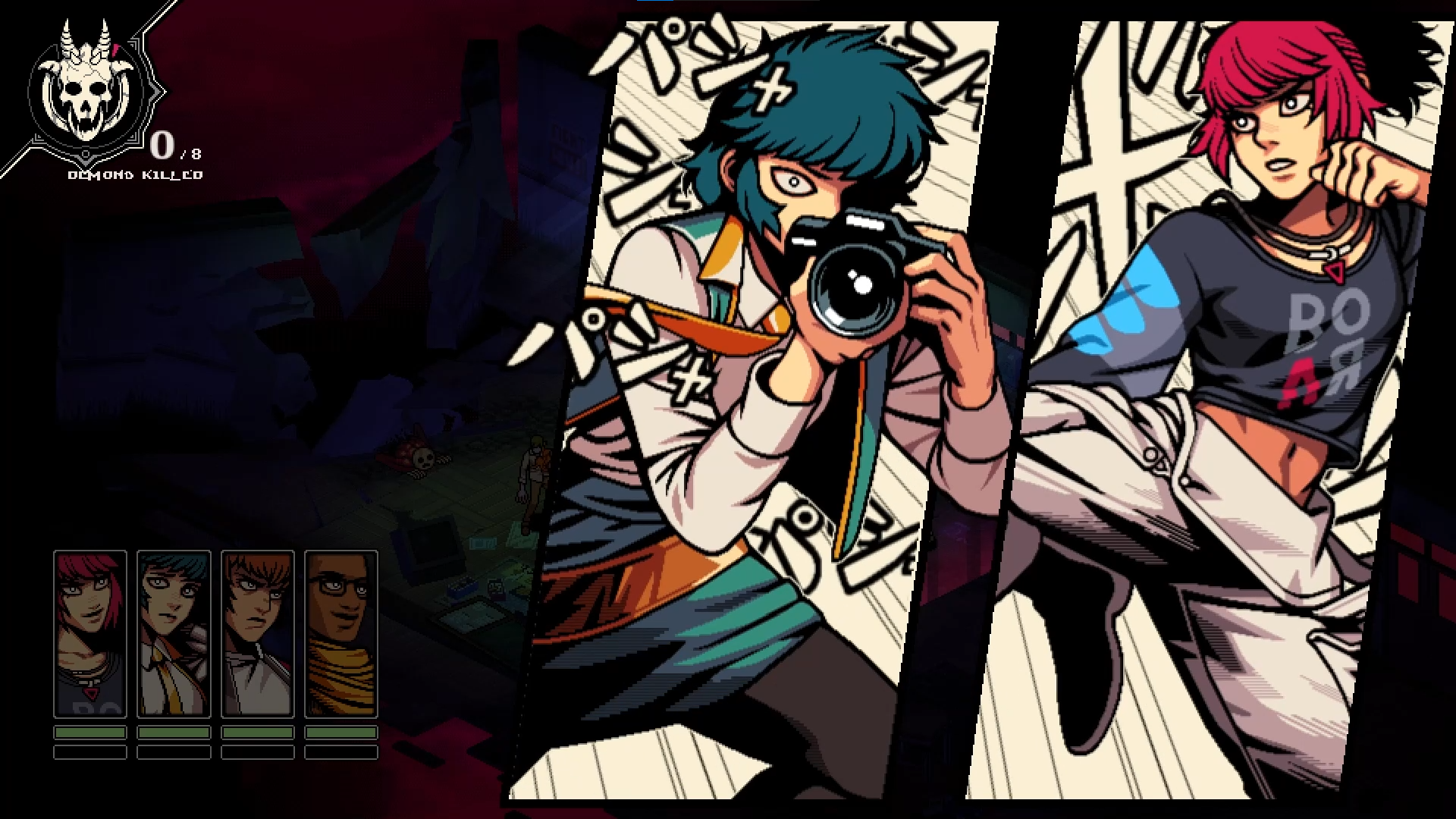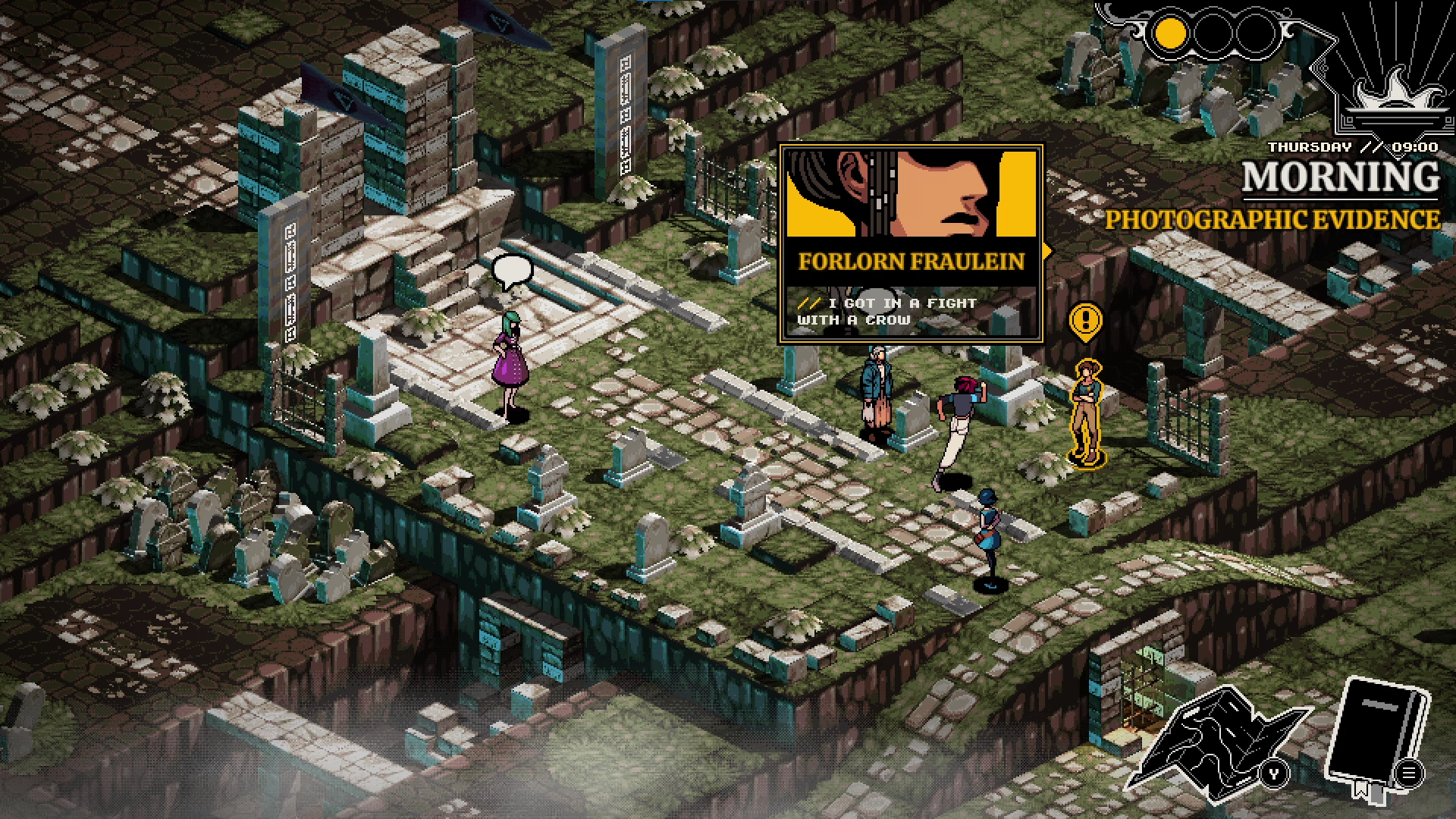
Announced at right this moment’s blockbuster PC Gaming Show, Demonschool is a ways RPG that mixes a number of acquainted parts into one thing that appears utterly new. The hook is that motion equals motion, which is a brand new one on me on the subject of isometric turn-based fight—you choose a personality, select a path, they usually’ll work together with no matter’s on that path, attacking enemies and buffing friendlies.
But a intelligent new fight system is simply one of many parts Demonschool is bringing to the desk. You start the game as Faye, a brand new pupil at a ‘college’ for malcontents, and likewise inheritor to a well-known lineage of demon hunters. You’ll quickly have 4 characters in your get together, every with their very own class and motion methods, and the fight system is streamlined and targeted on combo-ing your characters’ strikes to destroy foes extra effectively.
The game’s visible model is an actual deal with: the vast majority of the motion is isometric, however there are perspective shifts and digital camera tips that see the world shift between 2D and 3D. Developer Necrosoft Games says the visible influences are “classic Italian horror films of the ‘60s and ‘70s, drenched in strange visuals and hellish grotesquery driven by a funky bassline.”
The fight is one factor, however other than that Faye’s a pupil. If a number of the character fashions give off Persona vibes that is not the one similarity, as a result of a part of the game resides via a faculty semester: selecting what to check, who your folks are, growing your crew’s abilities via class schedules, and buying new allies with facet quests. You can “Foster friendships or fiery romances between them all”, says the developer, with numerous totally different endings relying on the trail you select.

Mix-and-match
I spoke to Brandon Sheffield, who’s the artistic director at Necrosoft Games, in regards to the game’s many inspirations.
“So in the case of Persona and Into the Breach, we just know people will make the comparisons, but they’re not actually the touchstones we were going for,” writes Sheffield. “It’s funny because we actually developed our battle system before Into the Breach was even announced, and then our programmer Shane played it as an IGF judge and was like “…uh oh!” The similarity is a total coincidence, we were actually inspired more by Valkyria Chronicles, but using a totally different visualization and approach.
“The purpose was to scale back the variety of clicks required to carry out in a standard ways area, so you are not doing the ole—select your character, select your spot, hit verify, select your motion, hit verify, select your enemy, and so forth and so forth. With our factor, movement equals motion. It simply so occurs that lined up fairly effectively with what Into the Breach was doing.”
Sheffield says Shin Megami Tensei: Devil Survivor on DS was a bigger influence than Persona (both are Atlus-developed series), but that the visual similarities are more to do with the fact that “there are solely so some ways you can also make realistically proportioned human characters in this type of isometric area. And in fact with demons and relationship constructing all of it will get a bit Persona-y. But actually, it is extra of a Shin Megami Tensei offshoot than something.”

Another of the names thrown into the combination is Yakuza, which Sheffield says is all to do with how Sega’s sequence treats time. You all the time have a foremost goal however there isn’t any time restrict on it inside the world: “Until then, you’re free to do whatever sidequests you want, goof around with minigames, just wander, whatever,” writes Sheffield. “We take that and simplify it, in that we have certain events that move time forward every day—the game takes place across a weekly schedule by the way—but you can freely do any other events that may come up, as you desire. It gives you a nice pacing and the ability to really play it at your leisure. My main thing in games is I want to be hanging out in a space, even if that space is weird and has demons in it.”
One of the elements of the game that made it enchantment to me is the otherworldly vibe that Necrosoft has managed to create. This place is vibrant-but-sinister, smooshing collectively issues that do not appear like they need to match and, with the attitude shifts, making all of it really feel somewhat unreal.
“Demonschool is a different kind of place,” writes Sheffield. “If you’ve ever seen Italian horror films from the ’70s, they feel as though they take place beyond time, in another universe that’s nearly identical to ours. I feel like that’s what games are, they’ve got all these hints of the familiar, but they’re ultimately fantastical. I get that also out of manga like Dorohedoro, where you’ve got people who are going through absolutely horrific stuff, but they’re quite accustomed to it. Things are going wild all around them, but they have to go through it, find humor where they can, and that sort of thing.”

Devilish beauty
I finish by asking Sheffield about the way in which that the 2D and 3D worlds rub up in opposition to and nearly bleed-through into each other, and a number of the particular influences going into this impact.
“There are a few major touchstones… some I would love for people to try and guess, so I won’t get into the actual specifics, but we take lighting cues from the Italian horror and giallo pictures of the 70s, so your Bavas and Argentos and Fulcis of the world,” Sheffield writes. “An obvious game one is Grandia, with the way they treat 2D and 3D, and the almost diorama-like construction of their environments. Then there’s our character avatars, which are all done by one of our artists, Catherine Menabde, which are very horror manga influenced. Suehiro Maruo is an influence, among others. Junji Ito is the one everyone thinks of, but he’s a bit less of an influence on this other than popularizing the art. You can see the horror manga influence in the way we use lines for shading, the emphasis on eyelashes, the occasionally maniacal faces, and so on.”

As for why the game’s look is exclusive, seems the crew put some self-imposed restrictions on itself which have ended up contributing to the general coherence of the aesthetic. “We also make use of dithering, and ‘physical’ visual effects that are made up out of polygons,” writes Sheffield. “We made up a bunch of rules that we (mostly!) stuck to, as though we were creating this game for a game console that never existed, but which had particular things it could and couldn’t do. That’s why most animations are 8 frames, or multiples thereof, and why the effects are constructed from polygons, and we heavily use dither for 3D, even though 2D can be transparent. It should also hopefully help give you that sense that the 2D and 3D worlds are fighting with each other for primacy.”
That final line’s one thing of a tease: a part of Demonschool’s thought is that the human world is 2D, and represented visually as such, whereas the demons making an attempt to pour into it are 3D. If you have a look at the trailer once more, discover how rather more the boss character fashions and grids are made to ‘pop’ into the world.
Demonschool is due on PC and Steam Deck in 2023, and this is the official site.









